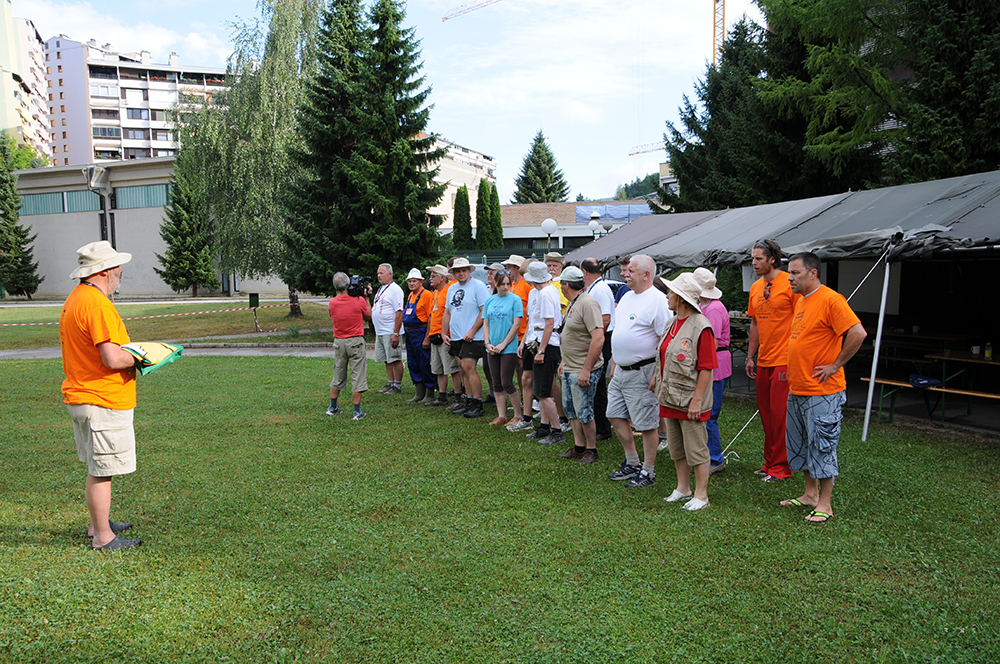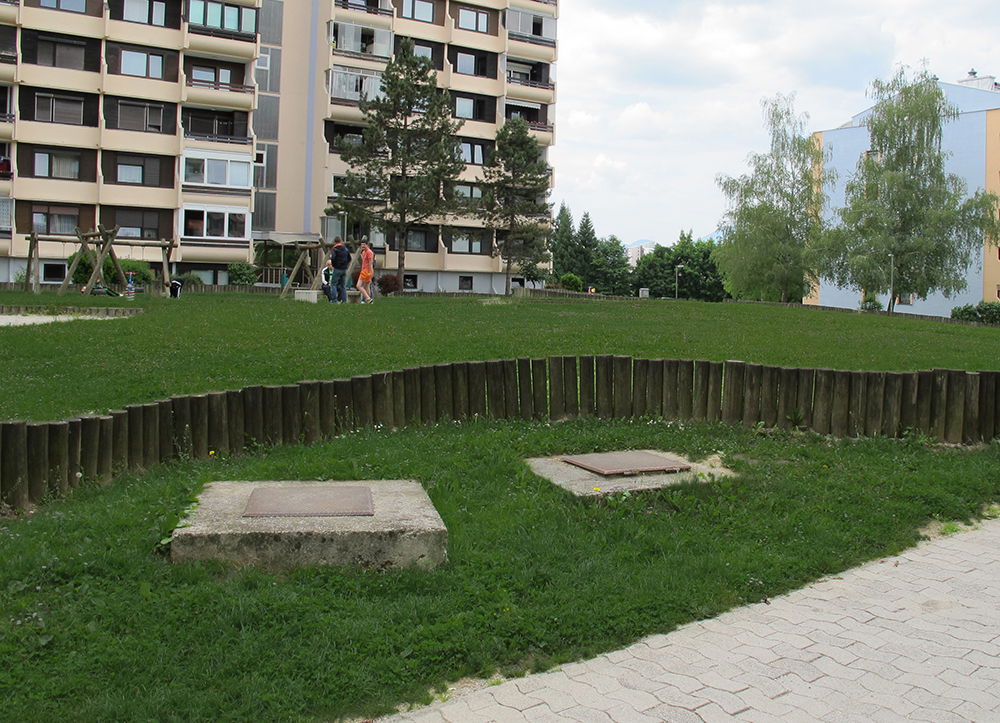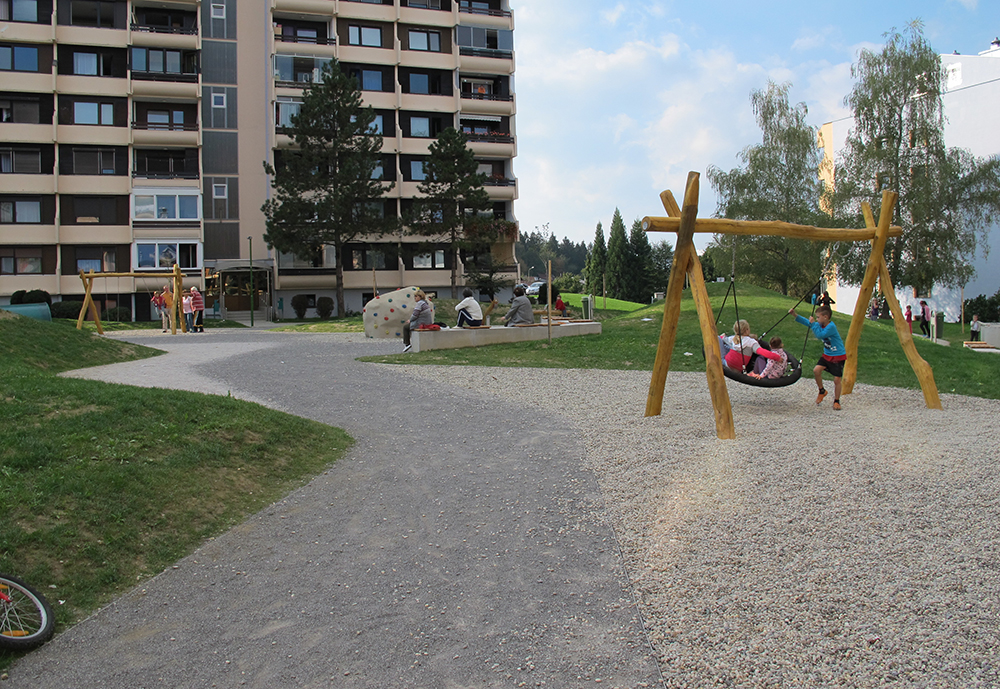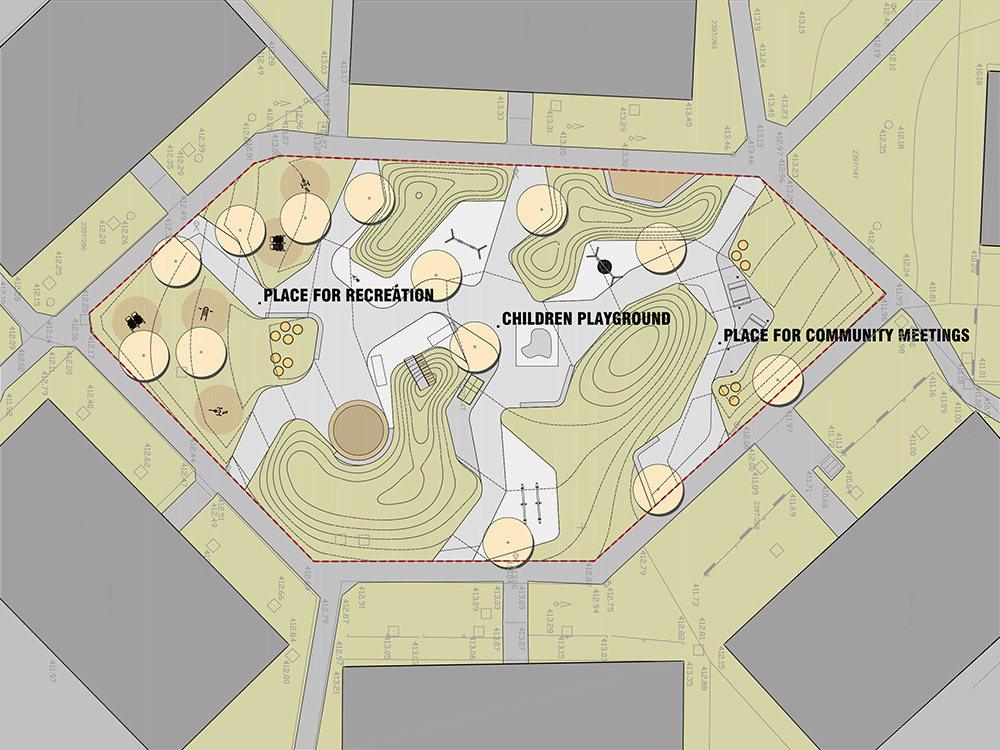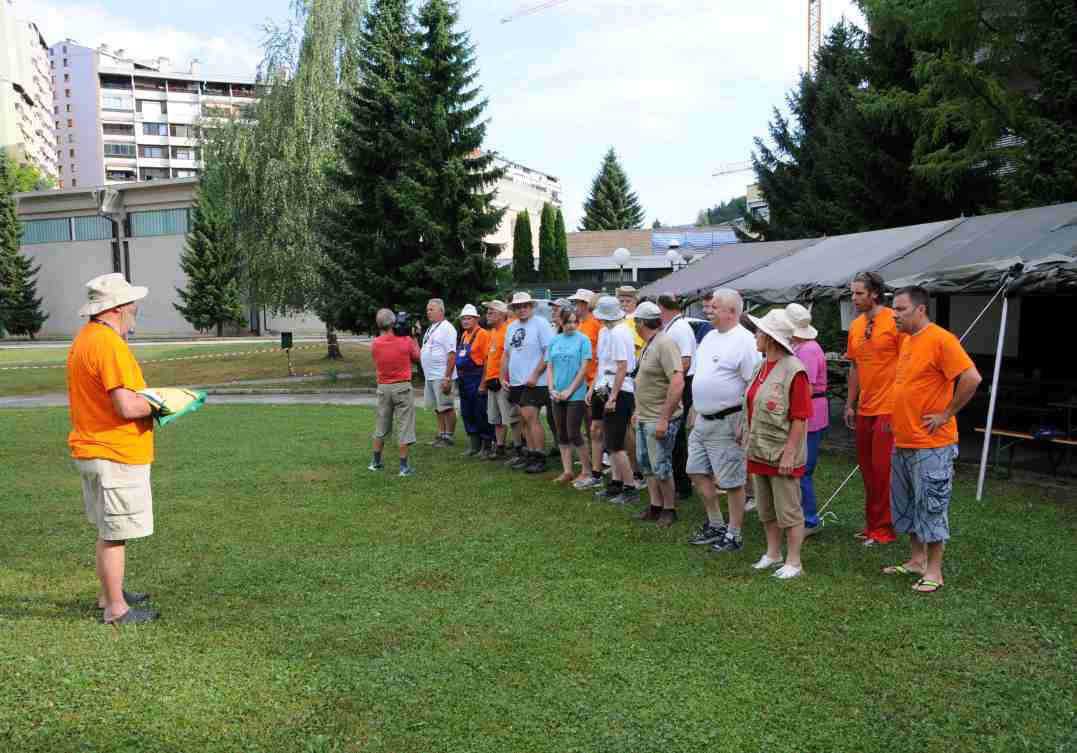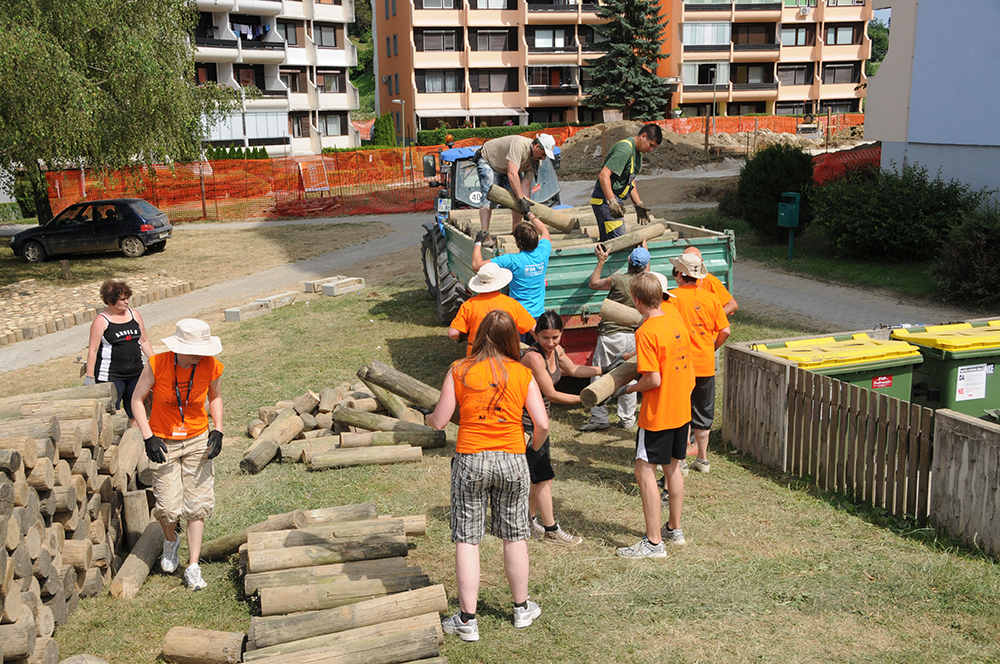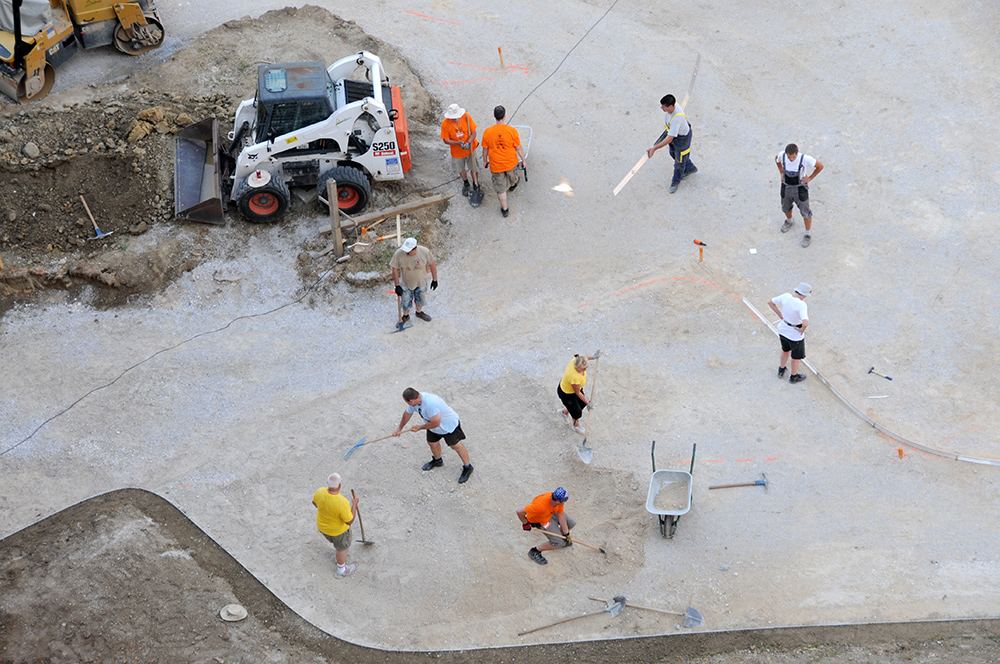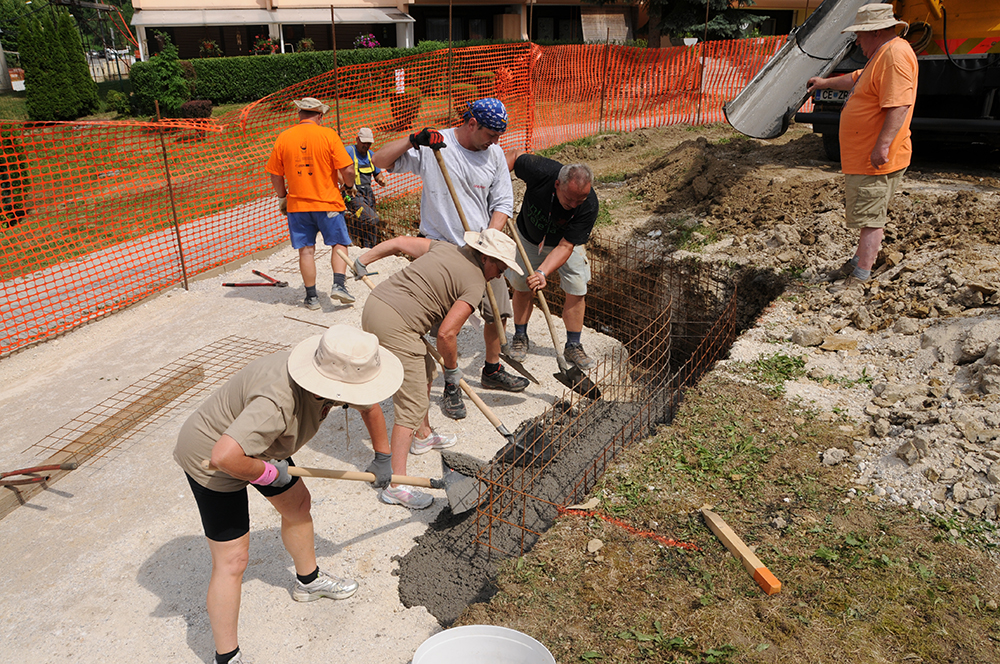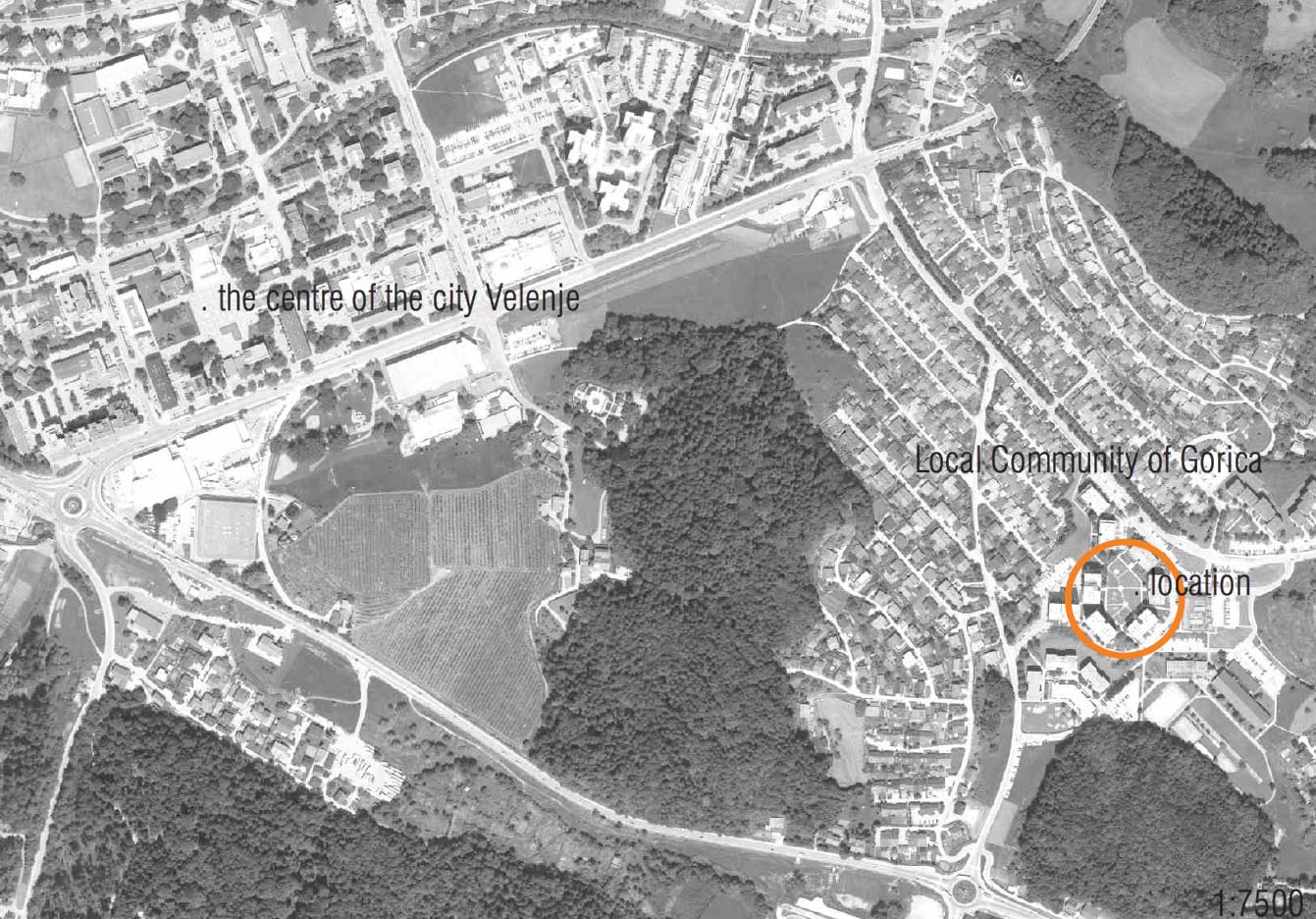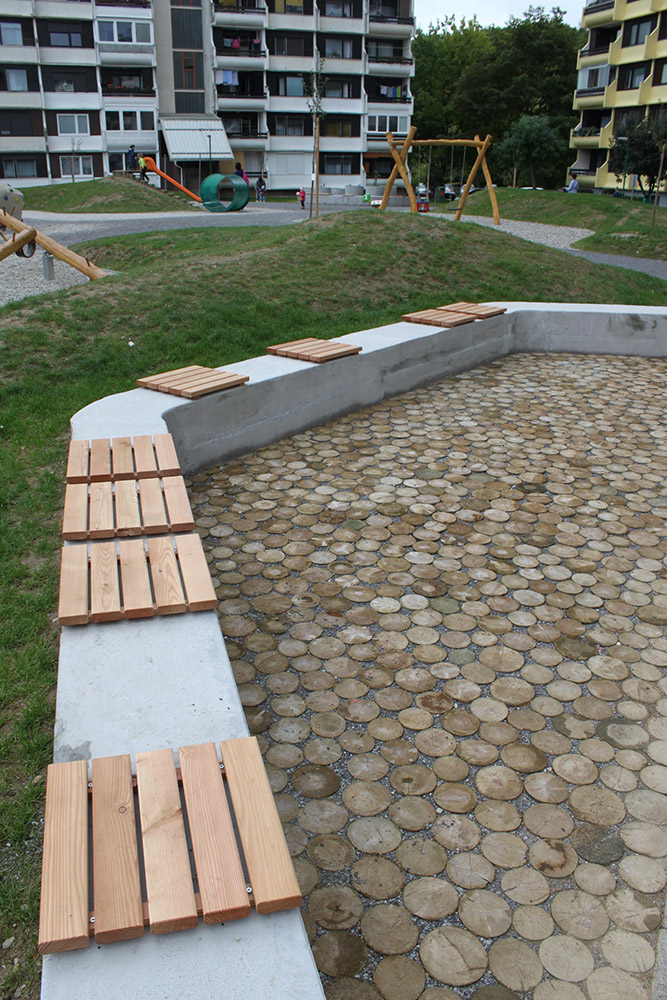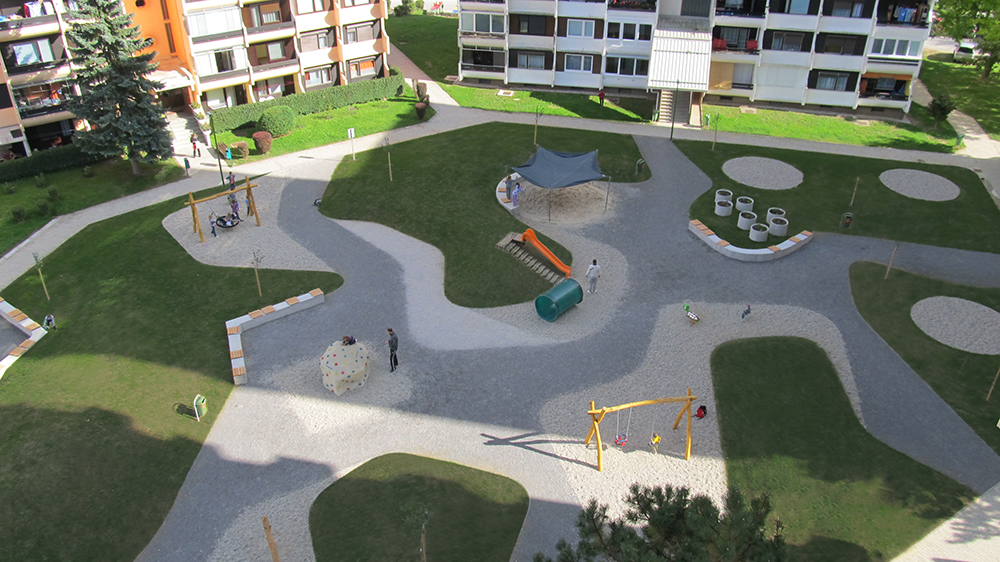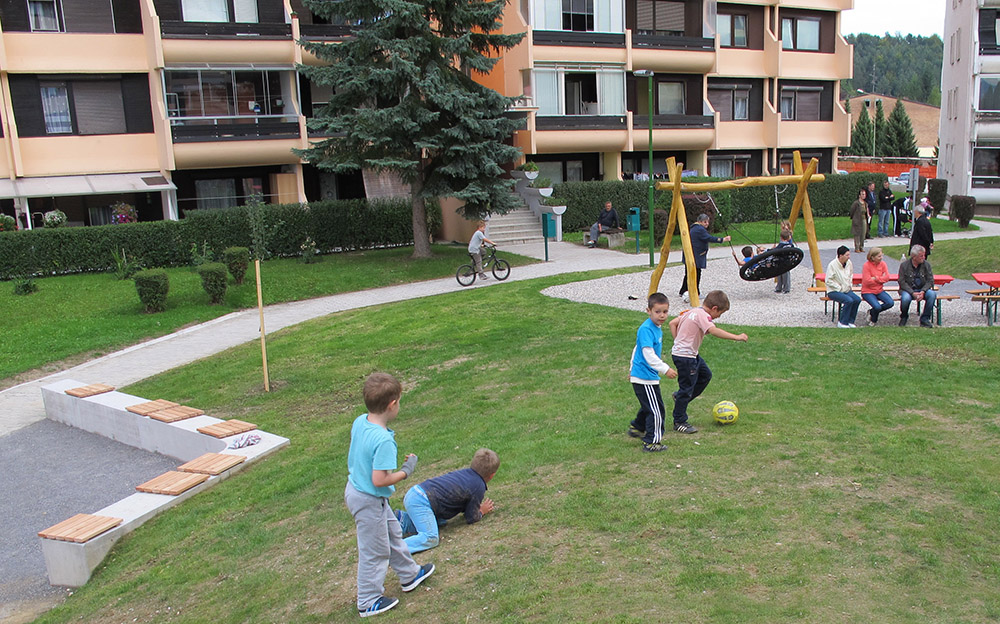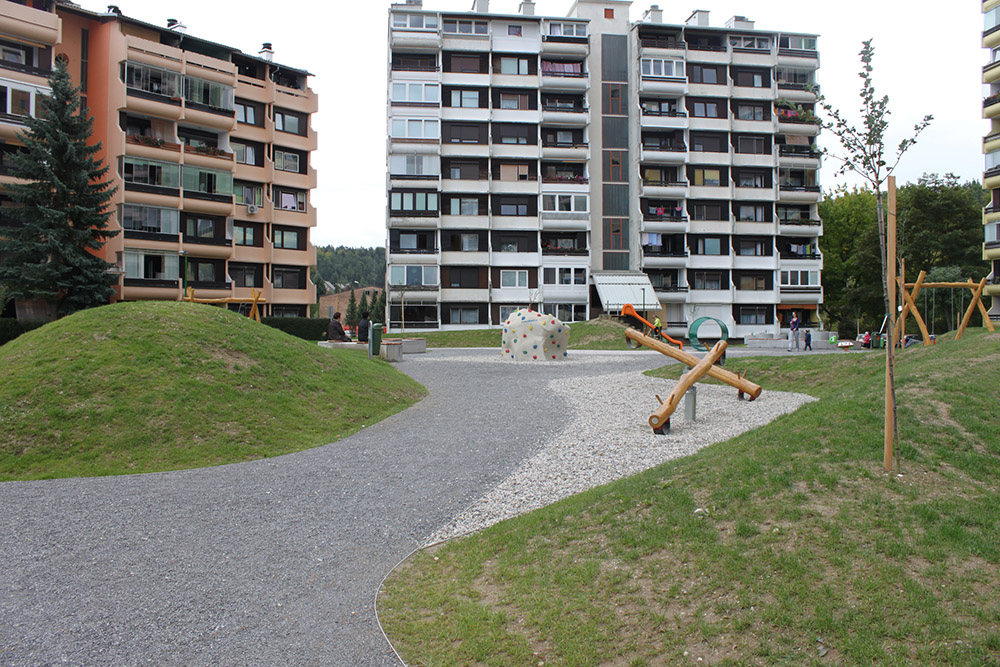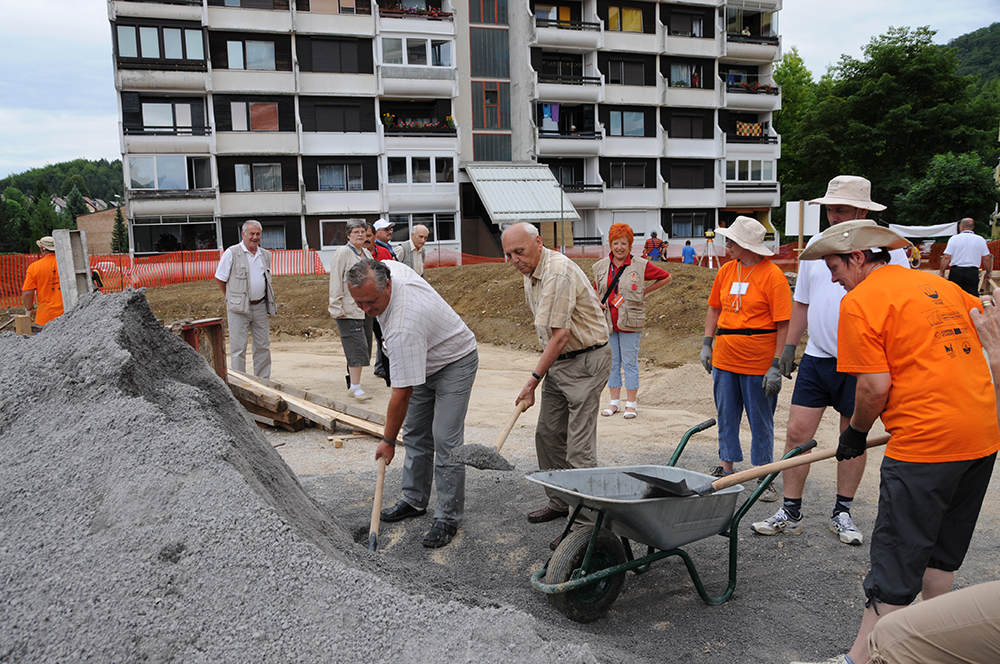Previous state
In 1950, the growing demand for coal led to the founding of the city of Velenje in order to house workers from a coalmining zone in the east of Slovenia. The future residents contributed their voluntary work in the construction of the buildings and basic infrastructure. The socialist authorities presented the new urban growth project as a space full of sun and fresh air, especially planned for miners who spent half their day underground. In fact, it was a typical modern housing estate consisting of a series of similar concrete blocks separated by overly large, empty, uninviting spaces.Twenty years later, the same mistake was committed in the centre of Gorica, the city’s second-biggest neighbourhood. This time the construction took the form of a circular esplanade surrounded by six residential blocks and conceived as an open-air leisure zone. However, four decades later it was a bare, run-down wasteland as a result of disuse and lack of maintenance.
Aim of the intervention
In 2012, the esplanade of just over three thousand square metres was chosen for a pilot project coming under the auspices of the ReNewTown programme, which aims to involve citizens in projects of revamping their neighbourhoods. Seeking to recover the founding spirit of Velenje, the Council called on citizens to contribute their voluntary work towards renovating the space. Apart from the hours of cost-free labour, the project had obtained a grant of almost a hundred thousand euros contributed by the European Union and several private sponsors.Description
The work was programmed in three consecutive phases. First, the land was to be readied with the use of heavy equipment. Next, a series of manual operations were to be carried out by a brigade of volunteers who, instead of sleeping at home, would camp in a nearby field. Finally, new playground equipment would be installed and vegetation planted. Before starting work, the residents drew up a plan for maintaining the space and undertook to be responsible for carrying it out once the renovation work was completed.The excessive width of the esplanade has been remedied by dividing it into three distinct areas: a children’s playground, a recreational zone, and a meeting place. Low grass-covered mounds separate the three sections and conserve their intimate particularity. They are connected with the surrounding buildings by a gravel path alongside which concrete benches with wooden seats have been installed, and trees have also been planted to reinforce the separation of zones. Moreover, there are herb gardens for the use of residents.
Assessment
The strategy of involving the local residents as voluntary workers has helped to unite a multicultural community of Slovenian, Bosnian, Croatian, Serbian and Romanian residents. The camp also helped to reinforce this process and offerings of coffee and cakes from other local people extended the effect beyond the group working on the project.The fact of having transformed the space with their own work and being in charge of its maintenance has meant that the residents feel that it is more theirs and hence they use it more. After the success of this experience, other neighbourhoods of Velenje have shown interest in organising similar initiatives.
David Bravo
Translation by Julie Wark
[Last update: 18/06/2018]


